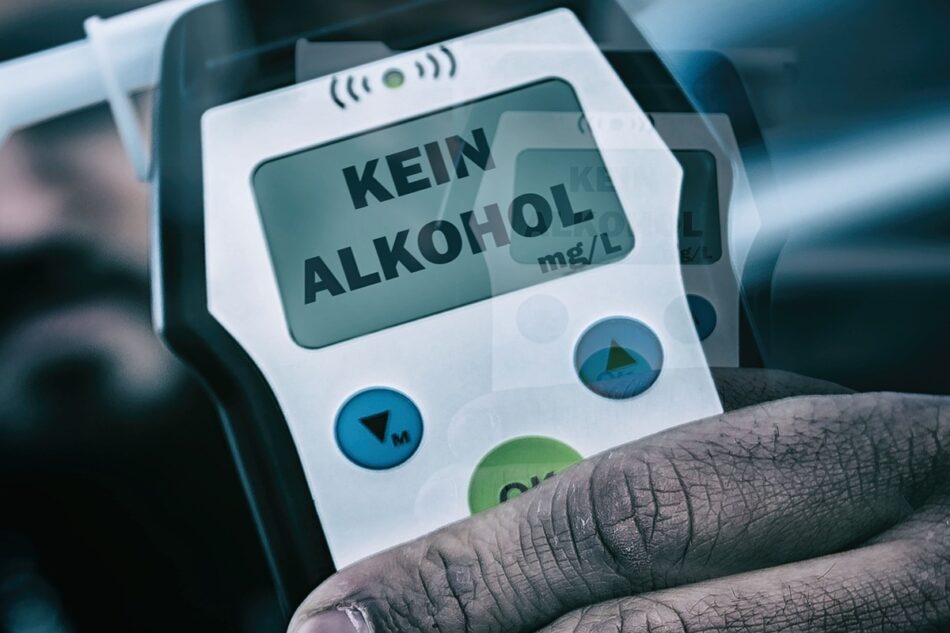Have you ever wondered why some people keep risking their own lives and those of others by driving under the influence of alcohol? Why would anyone take such a big gamble, knowing the tragic consequences that can result from drink driving? And how exactly can technology help turn things around when it comes to keeping our roads safer?
In this post, we’re going to examine a vital device that could make a massive difference in preventing drink driving incidents across Australia: the alcohol interlock. We’ll talk about what these devices are, how they work, and the positive impact they can have on everyday driving behavior. We’ll also explore the legal requirements, costs, and important details about installing and maintaining an alcohol interlock.
By reading further, you’ll come away with a clear understanding of why alcohol interlock devices are crucial for road safety. We’ll walk you through the ways they reduce repeat offences, encourage responsible driving habits, and ultimately help protect the wider community. If you’ve ever been curious about these devices—or you’re required to install one—this guide aims to cover every question you might have.
Why Road Safety Depends on Alcohol Interlocks
Drink driving continues to be a significant worry on Australian roads. Despite public awareness campaigns and strict laws, you still find people getting behind the wheel while over the limit. This is where alcohol interlock devices come in. They act as a powerful preventative measure, making sure that an individual cannot start their car if they have alcohol in their system. It’s hard to deny the power of such technology, especially when faced with repeated drink driving convictions.
Road safety often depends on a combination of enforcement, education, and practical interventions. You need strong laws, but you also need everyday barriers that actively stop high-risk behavior. An alcohol interlock fits perfectly into this approach. By integrating it into the driver’s routine, you reduce the risk of impulsive decisions—like thinking, “I’ve only had a couple of beers; I should be fine,” which is sadly a common mindset.
Australia’s zero or low-tolerance legal stance on drink driving is a reflection of just how serious the issue is. When drivers know they must use an alcohol interlock, they become more mindful of their alcohol intake. This mindfulness often extends into their social lives, encouraging them to plan ahead, call a taxi, or assign a designated driver. As a result, the roads become a bit safer for everyone, and the ripple effect saves countless potential victims from tragic accidents.
Alcohol Interlock Device Definition and Core Components
An alcohol interlock device is a breath-testing gadget linked to a vehicle’s ignition system. At its core, it features a mouthpiece for breath samples, a sensor that measures blood alcohol content (BAC), and a connection to the car’s engine control. If a driver’s breath sample measures over a pre-set BAC limit—often close to zero—the vehicle won’t start.
How Does It Work Alcohol Interlock Device?
To get the car going, the driver must first blow into the device. If the reading is safe, the ignition unlocks, and you can start the engine. However, the process doesn’t stop there. Alcohol interlocks typically require rolling tests, which means you’ll need to give further breath samples during your trip. These tests prevent the possibility of someone else providing the initial sample and make sure the driver isn’t stopping for a quick drink in the middle of a journey.
Common Myths and Misconceptions
There’s a persistent myth that you can trick an alcohol interlock device by sucking on a mint or drinking certain beverages. In reality, these tactics don’t work. The sensors are designed to detect alcohol-specific markers, so everyday masking activities simply won’t fool the system.

alcohol interlock
The Impact of Alcohol Interlocks on Road Safety
Alcohol interlock devices have been shown to lower repeat drink driving offences. This is crucial because repeat offenders often pose a high risk on the road. By making sure that any driver with a history of drink driving can’t start their vehicle if they’ve had alcohol, the device reduces the likelihood of reoffending. This has been observed in various Australian states where alcohol interlock programmers have become more common.
Promoting Responsible Driving Habits
An added perk of using an alcohol interlock is that it prompts drivers to adopt safer habits. When drivers have to consider their BAC level every time they start the car, they become more aware of how much they drink and when. This greater sense of awareness can encourage people to limit alcohol intake before driving—even after an interlock requirement has ended.
Conclusion
As technology advances, it’s likely that alcohol interlock devices will evolve to become even more sophisticated and user-friendly. Future developments might include enhanced sensors, advanced data-sharing options with authorities, or integration with smartphone apps to help drivers manage their usage more proactively. These enhancements could boost adoption rates and streamline the process for drivers who need an interlock.
As newer features roll out, they could also spread to other vehicle safety systems. Some car manufacturers might embed these devices directly in tomorrow’s vehicles, making it even simpler for those with interlock requirements—and possibly standardizing the mechanism for everyone’s advantage.
At the heart of it all, alcohol interlocks aren’t just about punishing drivers. They’re about intervening at crucial moments, preventing bad decisions before they turn into tragedies. By demanding consistent sobriety from those who have previously ignored safety warnings, these devices encourage positive, responsible habits. This focus on prevention can benefit not only individual drivers but also their families and the wider community.
Whether you’re someone who needs an interlock due to a drink driving offence or just a curious driver wanting to learn more, it’s worth appreciating the role these devices play. They save lives, cut down on legal complications, and protect road users of all ages. In the long run, embracing alcohol interlock technology can transform our roads into safer spaces, reinforcing the idea that drink driving has no place in Australia’s driving culture.








